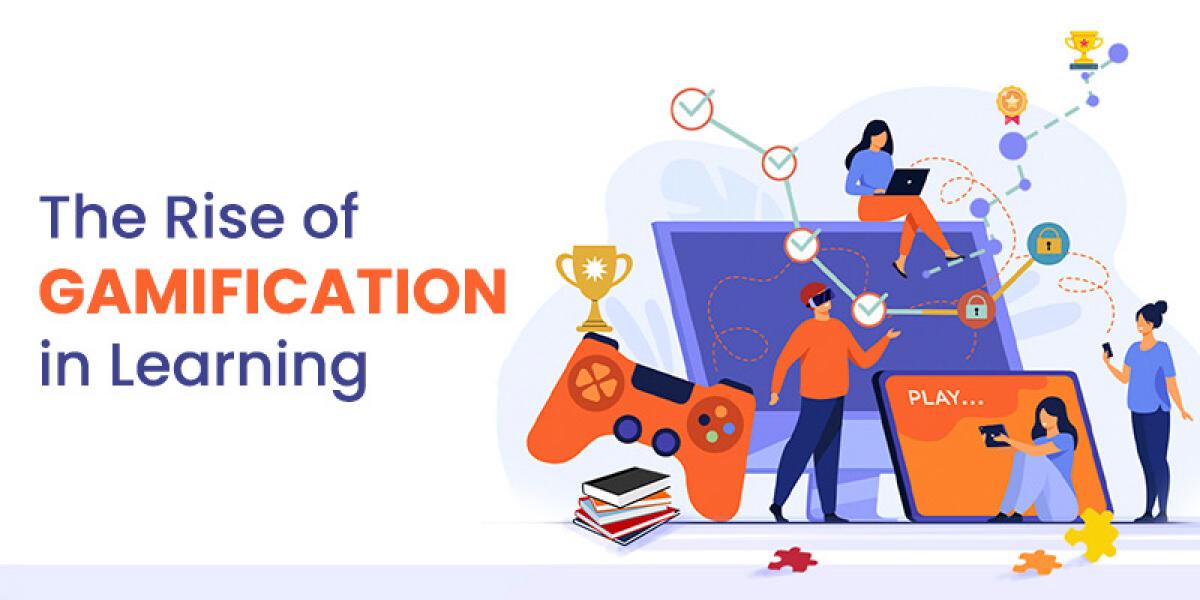The Future of Educational Gamification: Innovations Shaping Learning
In today’s rapidly evolving educational landscape, gamification is revolutionizing the way students learn and teachers teach. from primary classrooms to online courses, the implementation of game elements in pedagogy has proven to boost engagement, enhance retention, and foster lifelong learning. but what does the future hold for educational gamification? In this article, we’ll explore innovative trends, real-life benefits, and practical tips for leveraging the power of gamification in education.
Understanding Educational Gamification
Educational gamification refers to the integration of game design principles and elements—like points, badges, leaderboards, narratives, and quests—into learning processes. Instead of replacing conventional learning, gamified education complements existing methodologies, making them more interactive and motivating for learners of all ages.
Why Gamification Works in Learning
- it taps into intrinsic motivation by making learning fun and rewarding.
- Game mechanics encourage persistence, critical thinking, and collaboration.
- Instant feedback and story-driven challenges help learners master new skills.
- Progress tracking promotes a growth mindset and sense of achievement.
Innovations Shaping the Future of gamified Learning
The future of educational gamification is bright, driven by emerging technologies and creativity in instructional design. Here are the top innovations transforming learning experiences:
1. Artificial Intelligence-Powered Adaptive Learning
Artificial Intelligence (AI) is redefining gamified education by personalizing content and difficulty levels to each learner’s unique needs. AI-enabled platforms analyze performance data,suggest targeted challenges,and offer real-time feedback. This ensures no learner is left behind and maximizes knowledge retention.
2. Virtual and augmented Reality (VR/AR)
Immersive environments powered by VR and AR make history come alive, turn math into adventures, and let science students experiment in virtual labs. Students can safely explore complex scenarios, visualize abstract concepts, and build tangible skills—making learning more memorable and impactful.
3. Blockchain-Based Credentialing
Blockchain technology is making gamified achievements more valuable and transferrable. Micro-credentials and digital badges earned through gamified learning can now be securely stored,verified,and shared across institutions and employers,empowering students to showcase their skills beyond the classroom.
4. Social and Collaborative Learning Platforms
Gamification thrives on social interaction. Modern LMS platforms incorporate multiplayer quests, team challenges, and peer reviews, encouraging cooperative problem-solving and digital citizenship. Classroom communities flourish, and students gain communication skills for the future workforce.
5. Mobile Gamification Applications
With widespread smartphone usage, educational apps are weaving game mechanics into daily learning routines. Mobile gamification ensures anytime, anywhere access, enabling parents, teachers, and learners to collaborate for continuous enhancement.
benefits of Gamification in education
The adoption of educational gamification is supported by a growing body of research. Here’s why schools and universities worldwide are embracing game-based learning:
- Enhanced Engagement: Interactive challenges keep learners interested and involved.
- Increased Retention: Game-based repetition and storytelling boost memorization.
- Motivation: Progress bars, badges, and rewards nurture a sense of achievement.
- Collaboration: Group missions develop teamwork and leadership skills.
- Personalization: Adaptive mechanics cater to diverse learning styles and paces.
Case Studies: Gamification Success Stories
To illustrate the impact of gamified learning, let’s delve into some real-world examples:
Classcraft: Transforming Middle School Engagement
Classcraft, a role-playing game platform for classrooms, turns students into heroes. Teachers use quests, powers, and experience points to encourage positive behaviour and academic participation. The result? Increased collaboration and a 20% improvement in assignment completion rates.
Kahoot!: Energizing Knowledge Checks
One of the most popular quiz-based gamification tools, Kahoot! transforms formative assessment into a live competition. Students instantly recieve feedback, and teachers gain analytics to identify learning gaps. Kahoot! reports over 1 billion players worldwide, testifying to its motivational power.
Duolingo: Language Learning Through Game Design
Duolingo leverages badges, streaks, and unlockable levels to energize language learning. Its addictive structure has made Duolingo the world’s leading language app, supporting more than 500 million users on their journey to fluency.
Practical Tips for Implementing Gamification in Your classroom
Integrating gamification doesn’t require sophisticated technology or a complete curriculum overhaul. Here’s how educators and administrators can start small and scale up:
- Identify clear learning objectives and match appropriate game mechanics (points, badges, stories).
- Start with ready-made platforms like Kahoot!, Classcraft, or Quizizz for instant engagement.
- Design levels or levels of difficulty to give learners a sense of progression.
- use leaderboards to encourage healthy competition—but keep them inclusive and positive.
- Incorporate collaborative missions for teamwork and peer learning.
- Gather student feedback regularly and refine your approach.
- Celebrate achievements and offer real-life rewards for completing goals.
First-Hand Experience: A Teacher’s Perspective
“When I introduced game-based learning in my 7th grade science class, I witnessed a remarkable shift. Students who used to dread assignments began eagerly completing quests, collaborating with shy peers, and celebrating each milestone. The difference in engagement was night and day.”
— Sarah Martinez, middle school science teacher
Challenges and Considerations in Gamified Education
- Over-gamification can distract from core learning objectives if not balanced properly.
- Not all learners respond to game elements in the same way; personalization is key.
- Teachers need time and training to craft and implement effective gamified lessons.
- Investment in technology may be required for full-featured platforms and tools.
By addressing these challenges and focusing on pedagogy-first strategies, educators can maximize the positive impact of educational gamification.
Conclusion: The Next Era of Learning
The future of educational gamification is one of limitless possibility. As technology continues to advance, learning will become even more interactive, fun, and personalized. With innovations like AI, VR, and blockchain reshaping traditional classrooms, educators can harness game mechanics to unlock each student’s full potential. By keeping the focus on meaningful learning, building inclusive gamified experiences, and leveraging proven tools, we stand on the brink of an exciting new era in education. Are you ready to level up your classroom?

